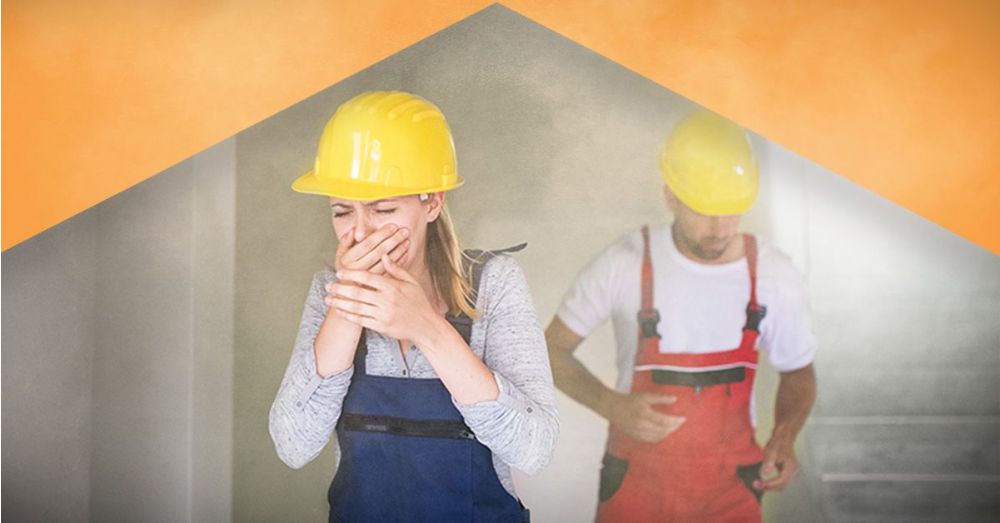The Top 4 Factors That Impact Indoor Air Quality
The EPA has noted excess moisture, volatile organic compounds (VOCs), carbon monoxide, and radon as the biggest sources of indoor air pollution. So, let’s take a look at each of these top four factors, how they impact indoor air quality, and how to manage and test indoor air quality.
1. Excess Moisture
Excessive moisture in buildings from leaking pipes or high humidity and condensation can accelerate the development of mold. Mold in turn can cause reactions causing respiratory discomfort, including:
- Coughing
- Sneezing
- Runny nose and congestion
- Red eyes
- Dry skin
- Skin rash
- Asthma
2. Volatile Organic Compounds (VOCs)
VOCs are emitted as gases from certain solids or liquids—and they include a variety of chemicals, some of which may have short-term and long-term adverse health effects. These health effects include:
- Eye, nose, and throat irritation
- Headaches
- Loss of coordination
- Nausea
- Damage to liver, kidney, and central nervous system
- Some VOCs can cause cancer in animals
- Some VOCs are suspected or known to cause cancer in humans
3. Carbon Monoxide
Carbon monoxide is an odorless, colorless, and toxic gas. In other words, it is impossible to see, taste, or smell the toxic fumes—making it extremely dangerous. The effects of carbon monoxide exposure can vary greatly from person to person depending on age, overall health, and the concentration and length of exposure. These effects include:
- Headache
- Dizziness
- Weakness and clumsiness
- Nausea and vomiting
- Quick, irregular heartbeat
- Chest pain
- Hearing loss
- Blurry vision
- Disorientation or confusion seizures
4. Radon
Much like carbon monoxide, you can neither see nor smell radon. Radon predisposes you to lung cancer, and the level of exposure can only be known through testing.
Industries & areas where IAQ monitoring is most important
Industries and areas where these sources apply and would require IAQ monitoring include:
- Any Indoor Space
- During Re-modeling/Construction activities Indoors
- Hospitals
- Clean Rooms
- Pharmaceutical Compounding Facilities
- Data Centers
- Warehouses with Lift Trucks emitting CO.
- Facilities that utilize Gasses and Compounds hazardous to Human health
Professional IAQ testing equipment
Instruments used for IAQ testing include:
- TSI 9565 – 964 (air flow) and 982 (IAQ-CO, CO2, Differential Pressure, Temp and Humidity)
- TSI – P-Trak – Ultra Fine Particle Counter
- TSI – DustTrak – Monitors the various particle sizes, particularly used during re-modeling
- GasMet DX4040 – Waste Anesthetic Gas
- Rae Systems Monitors with EtO sensor
- TSI/Alnor – EBT731 and 6200D for high and low flow air balancing
- BioPump – Sampling pump to test with Air-O-Cell (viable and non-viable aero-allergens including mold spores, pollen, insect parts, skin cells, fibers and inorganic particulate) and Via-Cell (viable and non-viable bioaerosols, maintain viability of viable mold spores) cassettes
Maintain Indoor Air Quality Standards with RAECO’s IAQ Testing Equipment
RAECO Rents supplies instrument from leading manufacturers to monitor and alert indoor air quality hazards. At RAECO Rents, we have training materials on the site to get you up to speed and or support staff is available for any question you might have. RAECO Rents only charges you for the days that you have the equipment in your hands and not when it is in transit to or from. Get in touch today!


